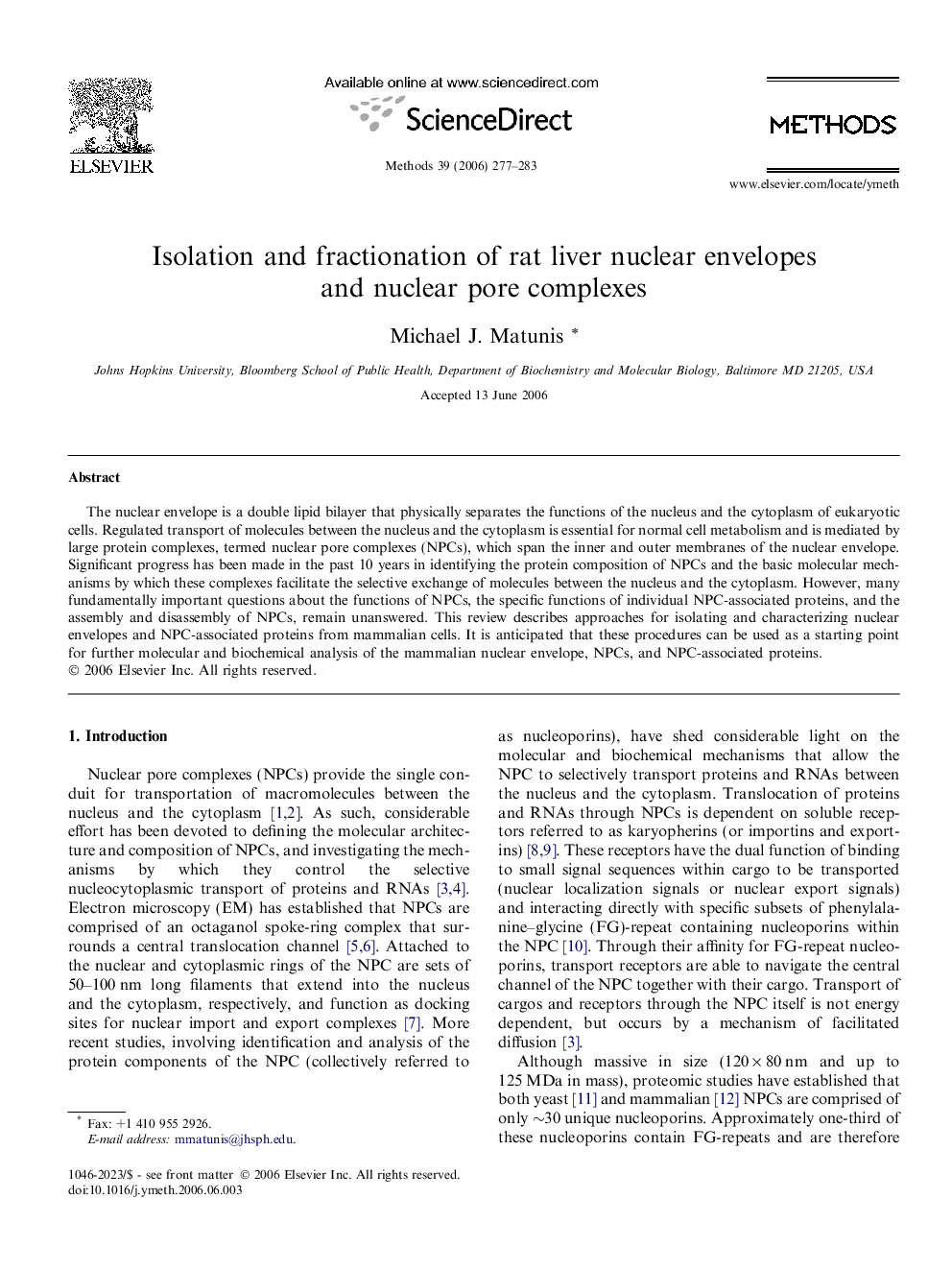| Article ID | Journal | Published Year | Pages | File Type |
|---|---|---|---|---|
| 1994496 | Methods | 2006 | 7 Pages |
Abstract
The nuclear envelope is a double lipid bilayer that physically separates the functions of the nucleus and the cytoplasm of eukaryotic cells. Regulated transport of molecules between the nucleus and the cytoplasm is essential for normal cell metabolism and is mediated by large protein complexes, termed nuclear pore complexes (NPCs), which span the inner and outer membranes of the nuclear envelope. Significant progress has been made in the past 10 years in identifying the protein composition of NPCs and the basic molecular mechanisms by which these complexes facilitate the selective exchange of molecules between the nucleus and the cytoplasm. However, many fundamentally important questions about the functions of NPCs, the specific functions of individual NPC-associated proteins, and the assembly and disassembly of NPCs, remain unanswered. This review describes approaches for isolating and characterizing nuclear envelopes and NPC-associated proteins from mammalian cells. It is anticipated that these procedures can be used as a starting point for further molecular and biochemical analysis of the mammalian nuclear envelope, NPCs, and NPC-associated proteins.
Related Topics
Life Sciences
Biochemistry, Genetics and Molecular Biology
Biochemistry
Authors
Michael J. Matunis,
